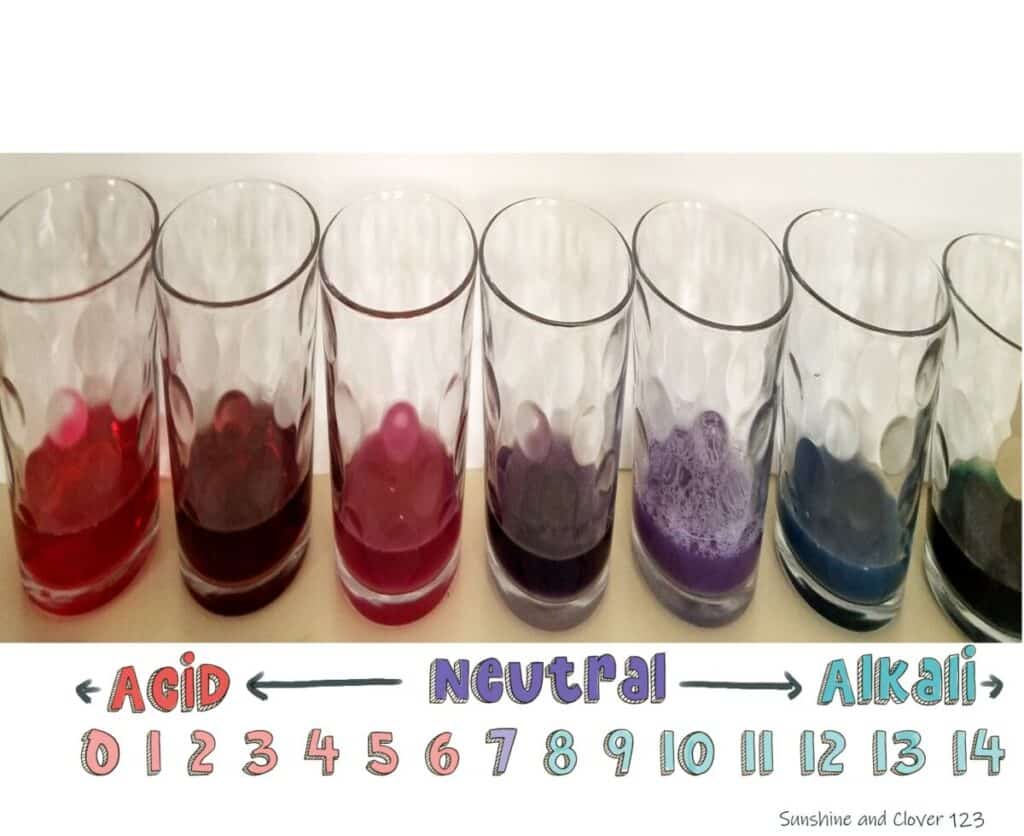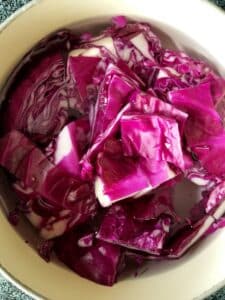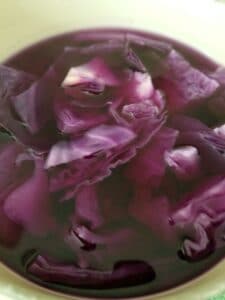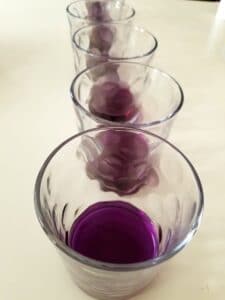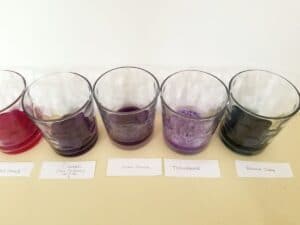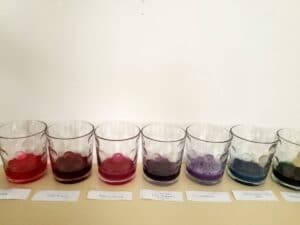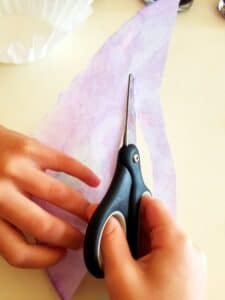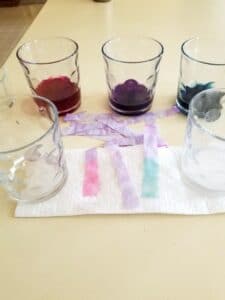View this post on Instagram
Using Red Cabbage In pH Testing
Page Contents
Not only can you eat red cabbage but you can use this vegetable in your next science experiment. It is easy to do, and is a fun hands on experiment to do with kids of all ages.
Ingredients for Your DIY pH Test
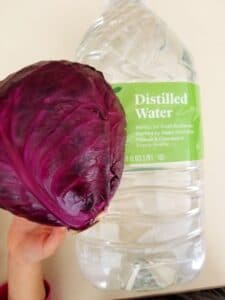
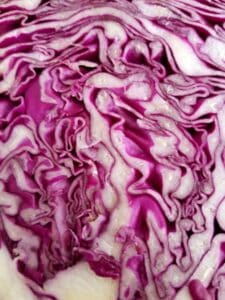
For this experiment you will need red cabbage and distilled water. We have a reverse osmosis system and it appears that the water from that works as well. I would not use your well or city water though. You want it to be pH neutral.
You will also need a saucepan, a strainer, and some glasses.
Instructions for your pH Science Experiment
- Cut up your cabbage and place it in a pot of distilled water. You don’t even need to measure it out, just fill it up over the red cabbage and your good.

Cut up cabbage placed into water on stovetop for DIY pH test *Tip- 1/2 a red cabbage gave us about a dozen tests. You could probably even get more if you used less per test.
- Bring your water cabbage mix to a boil for a couple minutes and then let it sit and steep for a few more minutes till the water has a nice purple color.

pH test is ready once water has a purple color - Sift out the cabbage from your water – or be extra lazy and just scoop it out while avoiding the chunks of cabbage…if you have a few chunks it is not going to hurt anything.
- Place your purple cabbage water into clear glasses.

Divide out your homemade pH solution into glasses - Find items you want to test. We tested applesauce, vinegar, soap, baking soda, soda, dirt, salt, and other random items. Be careful not to mix chemicals though as it could give off harmful vapors (Don’t mix bleach and ammonia for example.) Leave a glass untouched as your control / pH neutral glass.

pH testing results - Line your results up for better evaluation. Acids will be red whereas bases (alkaline) will be blue to green in color.

pH results – Acids will be red/pink. Bases will be blue/green - Have extra cabbage water left? Just store it in your fridge till you are ready to use it again (I have had ours in there for a week and it was fine.) Want to make it last even longer? Make pH strips out of it with coffee filters. Simply soak up the cabbage water with coffee filter(s), allow to try and then cut up into strips to use at a much later time.

Simply cut coffee filter into strips once they are dry 
Testing with homemade pH strip tests
What is pH?
pH is short for “power of hydrogen” or “potential of hydrogen”. The range goes from 0 to 14. With 0 being very acidic (battery acid), 7 being neutral (distilled water), and up to 14 being very alkaline / basic (liquid drain cleaner).
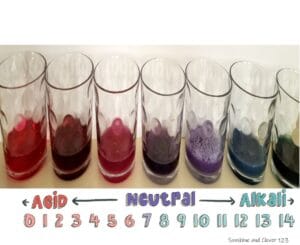
How Does this pH Test Work?
Red cabbage contains a pigment called anthocyanin that will change colors when mixed with something acidic or alkaline (basic). It will turn different hues of red when exposed to something acidic. Whereas when exposed to something alkaline (basic) it will turn a green to blue color.
Wrap Up
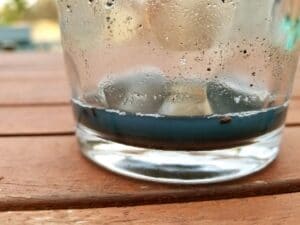
I first used this pH indicator to test our soil before planting our blueberry shrubs. The shrubs like acidic soil and I was able to see our soil tested more alkaline so now I know to add a soil acidifier to the soil there a couple times a year. Hint if using for soil testing – stir in a spoonful of dirt then give it a couple minutes to settle down to the bottom of your container so you can see the color. I feel this was a fun experiment with little effort on my part. My girls really liked this science experiment, and the youngest keeps requesting to do it over and over again. So I guess our house is going to smell like cabbage for awhile. What did you test? Did you have fun with this experiment? I would love to hear about it in the comments below! Have fun learning!
*This page contains affiliate links. All opinions are completely my own but if you follow one of my handy links I earn a small commission at no extra cost to you. As a participant in the Amazon Services LLC Associates Program I may earn a commission through their affiliate advertising program designed to provide a means for sites to earn advertising fees by advertising and linking to Amazon.com Thanks for your support!
More Science Experiments
DIY Playdough and the Science Behind it
Want to Stay in the Loop?
Sign up for the Sunshine and Clover 123 newsletter for a 30% off coupon code, and stay updated on the latest products and happenings! Have fun learning!
